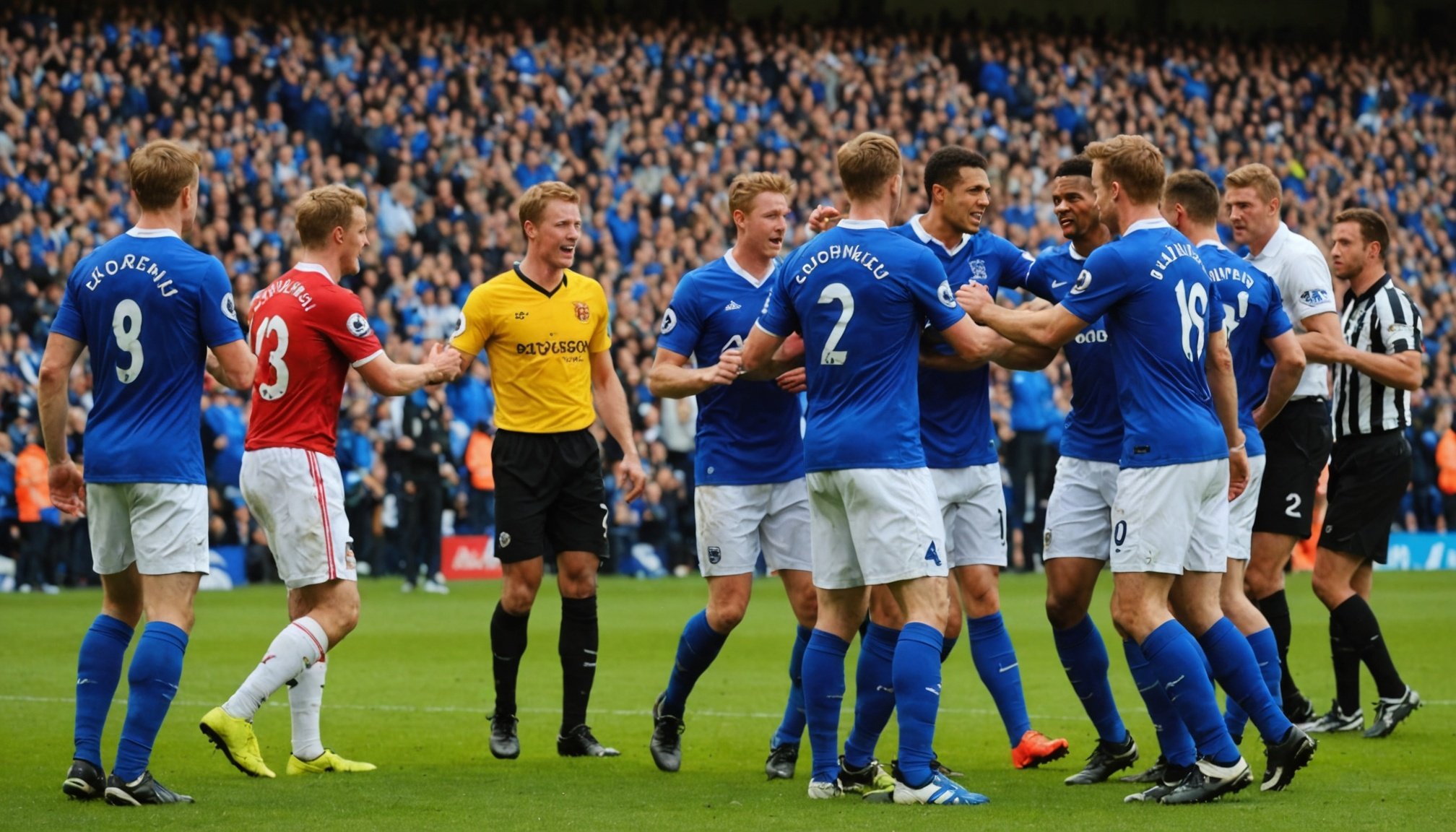Football in the United Kingdom is more than just a sport; it is a way of life. Among the many factors that contribute to its rich culture, rivalries stand out as one of the most significant elements. These fierce competitions between clubs not only fuel the passion of fans but also play a crucial role in shaping team performance on and off the pitch. In this article, we delve deep into the importance of rivalries in UK football and examine their impact on team dynamics, fan engagement, and overall performance.
Understanding Football Rivalries
To appreciate the significance of rivalries in UK football, it’s essential to understand what defines a football rivalry. At its core, a rivalry is an intense competition between two teams, often rooted in historical, geographical, or social contexts. Rivalries can emanate from local proximity, longstanding competitions, or even differing philosophies regarding the game.
This might interest you : What are the environmental impacts of football stadiums in the UK, and how can they be mitigated?
A classic example is the North West derby between Liverpool and Manchester United, where both clubs not only vie for supremacy in football but also represent wider socio-economic and cultural divides. Such rivalries can lead to heightened emotions during matches, creating an atmosphere charged with anticipation and excitement.
The significance of these rivalries extends beyond the matches themselves. They often influence the identity of clubs, as well as their supporters. Fans invest emotionally and financially in their teams, with rivalries amplifying this commitment. From creating chants to organizing events, supporters play a pivotal role in maintaining the fervor surrounding these contests.
Also to read : How can UK football clubs enhance their brand image through effective marketing strategies?
Rivalries also shape club narratives. Clubs often derive motivation from their historical rivalries, impacting their strategies on the field. Consequently, teams prepare meticulously for matches against their rivals, knowing that the outcome can have lasting ramifications for pride, league standings, and fan morale.
Impact on Team Performance
The influence of rivalries on team performance cannot be overstated. Matches against rivals often see players pushed to their limits, demonstrating enhanced intensity and determination. This performance boost is partly psychological; players understand the significance of the match, fueling their desire to outperform their opponents.
The pressure of a rivalry match can lead to varying results. Some players thrive under pressure, while others may struggle. For example, a player with a history of strong performances against rival teams may elevate their game, leading to match-winning moments. Conversely, teammates who feel overwhelmed by the atmosphere may underperform, affecting overall team cohesion.
Furthermore, the tactics employed in these matches tend to be more aggressive and calculated. Coaches often adopt strategies designed specifically to counter the strengths of the rival team, which can lead to unexpected plays and outcomes. This tactical focus can significantly affect the dynamics of how the game unfolds.
Moreover, rivalries can have a lasting impact on a team’s season. Winning a rivalry match can create a momentum shift, boosting morale and confidence for subsequent games. A loss, on the other hand, can lead to a downward spiral of negativity, affecting player relationships and performance moving forward.
Fan Engagement and Its Ramifications
Fan engagement during rivalry matches is at its peak, driving attendance numbers and viewership to record highs. The significance of this engagement is profound, as it creates a vibrant community around the clubs. Supporters often come together to celebrate their team’s history, traditions, and shared values, reinforcing their connection to one another and the team.
Rivalry matches often turn stadiums into cauldrons of emotion, with fans participating in chants and displaying banners that showcase their loyalty. This electric atmosphere can significantly influence the performance of players. Home teams, buoyed by passionate support, often find an additional layer of motivation to succeed. Conversely, visiting teams may feel the pressure, leading to either exceptional performances or untimely mistakes.
Social media has further transformed the landscape of fan engagement. Rivalry matches spark intense discussions, memes, and even social media campaigns that keep fans engaged long after the final whistle. This engagement extends into merchandise sales, where clubs capitalize on the rivalry to promote special edition kits or memorabilia. The financial implications of these rivalries are considerable, with clubs benefiting from increased matchday revenues and merchandise sales.
However, intense rivalries can sometimes lead to negative consequences, including fan violence or disorder. The need for clubs and authorities to manage such situations has led to increased security measures during matches, emphasizing the need for responsible fan behavior. Striking a balance between passionate support and maintaining safety is a challenge that clubs consistently face.
The Historical Context of Rivalries
Understanding the historical context of rivalries in UK football offers insights into why they hold such importance today. Many rivalries have roots in local or national events that transcended sport, leading to deep-seated animosities or affiliations. For instance, the rivalry between Celtic and Rangers is deeply intertwined with political, religious, and cultural narratives in Scotland, making every encounter more than just a football match.
Similarly, rivalries based on geographical proximity, such as the East Midlands derby between Nottingham Forest and Derby County, stem from local pride and identity. These matches often serve as a microcosm of larger socio-political issues, reflecting the fabric of society within a sporting context.
Rivalries evolve over time, influenced by changes in management, player transfers, and evolving club narratives. However, the core of these rivalries often remains intact, as generations of fans pass down their allegiance and stories. Clubs and supporters build upon this legacy, ensuring that the history of these rivalries continues to resonate.
Moreover, rivalries often influence the development of youth academies, as clubs prioritize creating talent that not only understands the game but also appreciates the importance of these contests. The commitment to fostering a culture that values rivalry is evident in training regimes and player development, ensuring that the next generation is prepared to carry the torch.
In conclusion, the significance of rivalries in UK football extends far beyond the pitch. They shape team performance, fan engagement, and the historical context of clubs, creating a rich tapestry of culture and emotion intertwined with the sport. As fans, players, and clubs navigate the landscape of football, understanding the nuances and implications of these rivalries becomes essential. From the exhilaration of match days to the challenges of maintaining safety and respect, rivalries continue to be a defining feature of UK football, ensuring its place in the hearts of millions.











